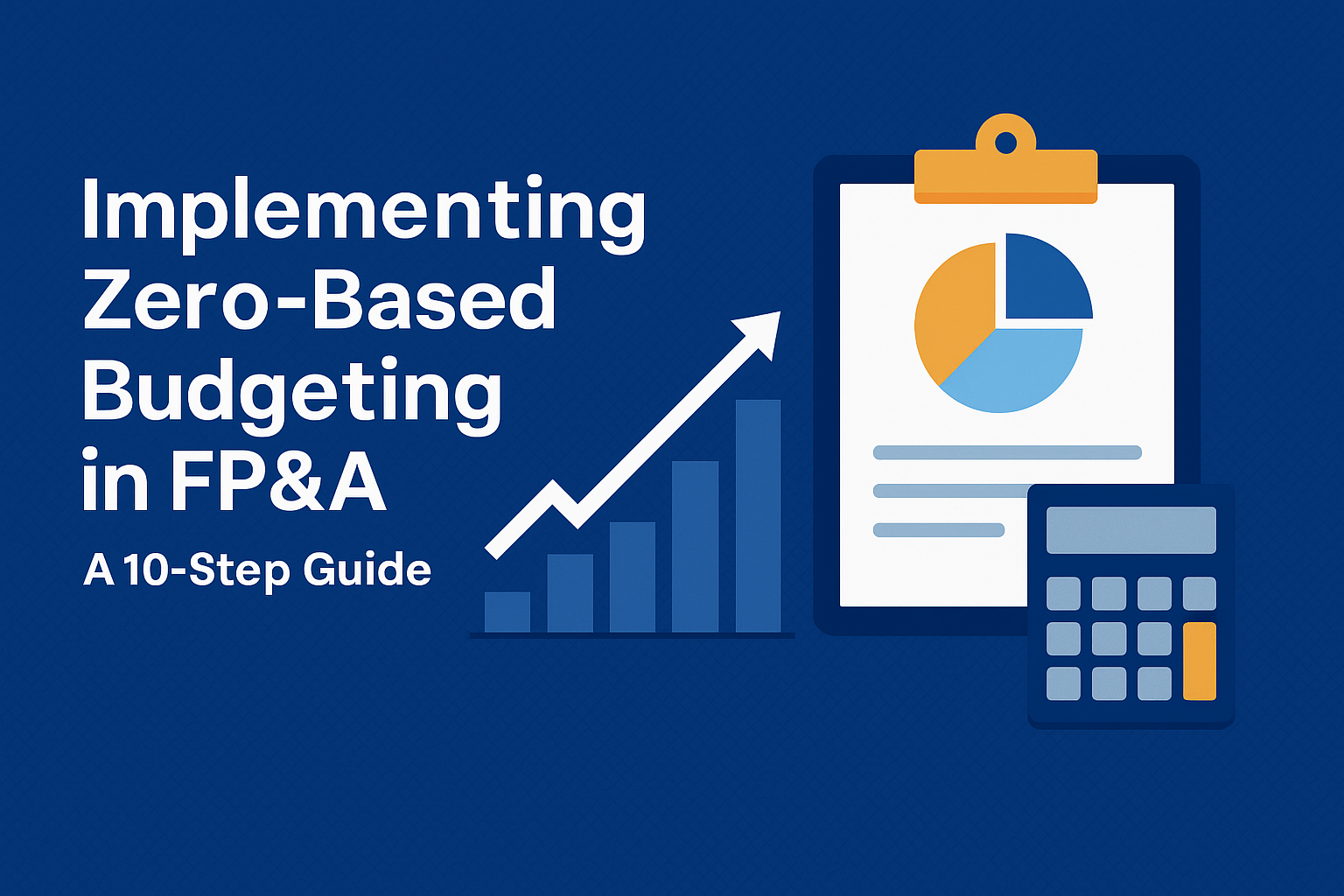The Hidden Edge: Why Growing Companies Need FP&A Before They Think They Do
I used to think we could scale our finance team with grit, hustle, and spreadsheets.
And for a while, we did. Forecasts were living documents (in five tabs). We tracked cash burn on whiteboards. The budget was something I explained out loud more than I ever wrote down.
Eventually, I realized that if we were going to keep growing—fast—we needed more than duct tape and late nights.
So I decided to bring in the latest FP&A technology. Not a cheap decision. Not a small one. But I believed it was the right call. The pitch was solid: fast implementation, seamless integrations, and reporting that would make our board swoon.
Implementation was supposed to take six weeks.
Six. Months. Later…
We were still stuck in configuration hell.
And when we finally turned it on, the output was so clunky my team had to rebuild the reports in Excel just to explain them to operators.
It was one of the most frustrating experiences of my career—and one of the most important.
Because it taught me two things I’ll never forget:
- Spreadsheets aren’t going anywhere. They’re still the fastest, most flexible way for finance folks to explore data. Like it or not, they’re our native language.
- But spreadsheets can’t do everything. They’re not built for collaboration. They don’t tell the story behind the numbers. And when you’re leading FP&A, that story is everything.
So I stopped thinking about tech as a replacement. And started thinking about FP&A as a strategic function.
Here’s what that looks like—and why high-growth companies need it sooner than they think.
Growing Pains Come With a Price Tag
When a company’s scaling, it’s tempting to delay bringing in FP&A.
“We’re not ready.” “The ops team has it handled.” “We’ll hire finance after the next round.”
I’ve heard every version—and lived most of them.
But here’s what I’ve learned: the longer you wait, the more expensive it gets.
Missed margin targets. Blown headcount plans. Botched pricing experiments.
It adds up fast.
The Moment You Feel Chaos? That’s When You Needed FP&A Yesterday
Here’s the quiet signal you’re overdue: planning starts feeling political.
- Sales wants more headcount.
- Product wants faster velocity.
- Marketing wants more budget.
- Leadership wants alignment.
And the spreadsheet can’t tell you what trade-offs make sense.
That’s where FP&A earns its keep—not just crunching numbers but helping the business make choices.
Good FP&A Asks Better Questions
When we started investing in FP&A seriously, we stopped answering questions and started defining them.
Every planning cycle now starts with:
- What assumptions are changing?
- What’s the real driver of our burn?
- What happens if revenue misses by 10%?
The model is a tool. The conversation is the value.
Table: FP&A Impact by Growth Stage
| Growth Stage | Common Problem | What FP&A Adds |
|---|---|---|
| Seed | Burn unknown | Simple forecasting + hiring map |
| Series A | CAC inflated | Cohort analysis, funnel metrics |
| Series B | Headcount misaligned | Org structure modeling, productivity |
| Series C+ | Scaling too fast or too slow | Scenario planning, gross margin insight |
I Wish I’d Brought FP&A In Sooner
Honestly? We thought we were too early. But by the time we brought in our first strategic FP&A hire, we were already behind:
- Budgets had no ownership
- Revenue planning was a black box
- We were optimizing top-line while margin eroded quietly
The first thing that FP&A helped us do? See.
Really see.
Where we were bleeding. Where we were guessing. Where we were defaulting to historical inertia instead of data.
Don’t Build the Model to Calculate—Build It to Clarify
This mindset shift changed everything for us.
Old model: calculate runway, produce a board deck, cross fingers.
New model: clarify trade-offs, test decisions, tell a story.
You know you’ve hit FP&A maturity when your forecast isn’t a report—it’s a conversation starter.
The Best FP&A Teams Don’t Just Forecast—They Shape the Future
Great FP&A isn’t reactionary.
It’s proactive. It brings optionality to leadership. It closes the loop between business inputs and financial outcomes.
It’s not about catching mistakes. It’s about asking what’s possible.
Final Thought: It’s Not Too Late. But It’s Probably Not Too Early Either.
If you’re wondering whether you need FP&A—you probably do.
Bring it in when:
- You’re planning headcount across multiple teams
- Your board asks for scenario analysis and you panic
- You start getting inconsistent answers about runway
The longer you wait, the longer it takes to clean things up.
What you need isn’t a perfect model. You need a partner in finance who can help your company make better decisions, faster.
The tools help. But FP&A is a mindset before it’s a team.
And that mindset? That’s the hidden edge most growing companies never realize they needed—until it’s too late.
If you’ve ever felt behind, or watched your team boomerang back to Excel, I see you.
You’re not broken. You’re just ready to lead differently.
Let’s make finance strategic again.










Leave a Reply
Want to join the discussion?Feel free to contribute!